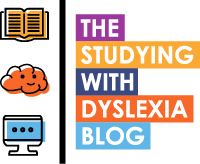How can teachers help dyslexic pupils when it comes down to teaching maths? Maths teacher and headmaster of St David’s College, Andrew Russell shares how tackling the fear of maths and self-defeating beliefs can be essential for successful learning. Read on for Andrew’s top five tips (and for an obvious mistake!).
Andrew writes….
“Fear is the greatest challenge.”
Overcoming fear is the greatest challenge faced by Mathematics teachers. In my experience, perhaps the greatest of all - the double whammy so to say - was having to come to Maths lessons and then being taught by the Deputy Headmaster. So, yes, overcoming fear is important. This is accomplished by ensuring that the children feel safe and free from judgement when encouraged to have a go and to never give up. Fun, heavily individualised programmes and as many different approaches to Mathematical discovery also help in allowing for a comfortable learning environment. And, finally, having a ‘cliff-hanger’ or a ‘Coronation Street moment’ at the end of each lesson encourages the learner to look forward to taking part in the next episode (lesson).
Parental views of Mathematics can also present a challenge for us to overcome – when we are told ‘well I was never any good at Maths’ or ‘I was so scared of Maths when I was at school’ we see how anxieties can be perpetuated. When this is overcome and a child eventually expresses a love (ok perhaps a bit strong, maybe a joy) for Maths, parents often wish to come back to the classroom environment to have another go themselves.
The Top Five Tips For Teaching Maths To Dyslexic Pupils.
1. Praise
Many dyslexic students develop negative attitudes to Mathematics and have high Mathematics anxiety. High anxiety reduces their ability to work as their working memory virtual shuts down leaving the brain unable to process even the simplest of tasks. Creating an atmosphere and environment where any answer is one which can be discussed without prejudice is hugely important. Talking through Mathematics problems is a key skill in developing in students. This is all part of understanding them and how they learn.
2. Be patient
This goes along with praise. Allow students time to think. Let them doodle the question in their own way. Encourage them to draw diagrams, jottings and create ways that helps them as individuals to learn. Mini white boards and tablet computers are great to help them achieve.
3. Flexibility
Just because one method works for you, doesn’t mean that it will work for me. Try different approaches to tasks. Allow for many alternative methods. When you ask someone to get from A to B they may choose a very different route to the obvious, however the logic and steps may lead them to the final destination and they may surprise you.
4. Teach self-checking strategies
Dyslexia affects fluency and accuracy which is often linked to issues with poor working memory (iv). Teaching student methods that allow them to check the work is vitally important. The dyslexic brain is very good at tricking the student as often they have learnt to automatically fill in gaps which is how so many are late to be diagnosed.
5. Variation rather than rote and drill
Whilst rote and drill works for phonological processing which occurs in the left hemisphere of the brain (associated with language skills (v), numerosity- number sense occurs within the IPS (intraparietal sulcus) located in the parietal lobe. It is important to achieve deep learning to master Mathematics and often with rote tasks deep learning is switched off. Variation of tasks, using manipulatives, concrete – pictorial – abstract learning all can help achieve deep learning.
6. Expect the unexpected
Give all students access to a wide range of problems. Just because a topic has a high grade doesn’t mean that because you are dyslexic you cannot achieve a high grade in Mathematics. Everyone has strengths and weaknesses and all can achieve.
“That lightbulb moment in a child is worth the patience and dedication!”
I hope you noticed the deliberate mistake and mark my work accordingly, remembering that I trained as an Accountant so I have a licence to be Mathematically creative! (you may notice that my list is VAT inclusive)
I would like to add that as a personal note I have always valued humour in the classroom. I don’t believe there is a place in schools for dry teaching. Throughout my career I have let the children know that I am human, I love Maths (always with a capital M) and that everyone can too, that I am humble but more especially that I feel privileged to be guiding them through their Mathematical challenges. I had to work hard at Maths too, it didn’t come naturally!
Finally, our school motto ‘Never Give Up’ reminds us that there will be barriers to overcome at different times and other areas of our lives. Learning to persevere through Mathematical problem solving (Mathematical resilience so to speak) can help translate these essential skills into all kinds of arenas that don’t seem related to Maths. I have often questioned whether I am a Maths teacher or a Languages teacher – for much of what I have done in the Maths classroom for the past 27 years has been more about translation than anything else! It is the best job in the world. That lightbulb moment in a child is worth the patience and dedication.
References
(iv) Alloway, Gathercole, Willis and Adams (2005)
(v) Shaywitz and Shaywitz 2006
I am grateful to my incredible Maths department for their contributions to this article.




